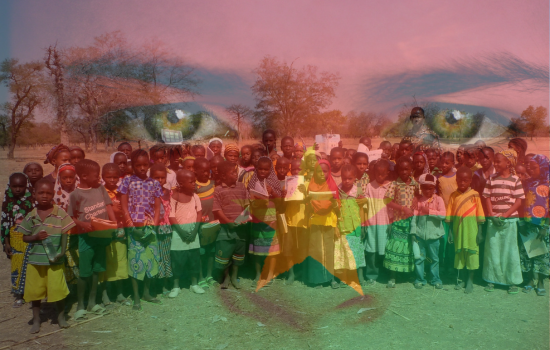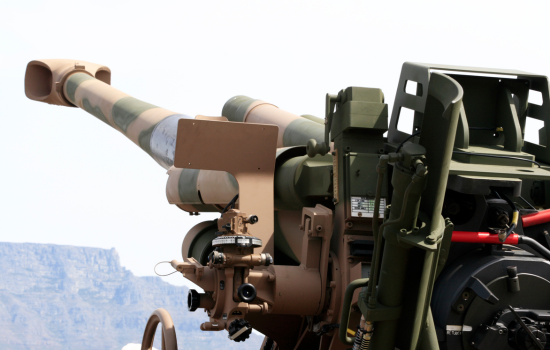Collective Suicide
Paper first published in the South Asia Intelliegence Review (SAIR)
In a daring suicide attack barely a hundred yards from the Frontier Constabulary (FC) Headquarters in Peshawar, the provincial capital of Khyber Pakhtunkhwa (KP, formerly the North West Frontier Province), a 15-year-old boy blew himself up, killing the FC chief, Sifwat Ghayoor, along with three of his bodyguards on August 4, 2010. Another eleven persons were injured in the attack. Police said that about 10 kilogrammes of explosives were used in the blast.
Though this killing was itself a matter of grave concern, it is the trend of suicide bombings across Pakistan that is causing greater apprehension. The first suicide attack in the country was recorded at capital Islamabad, on November 19, 1995, when a bomber rammed his explosives-laden truck into the Embassy of Egypt, killing 14 people. The bomber, an Egyptian national, belonging to the Egyptian Islamic Jihad, was believed to have acted in retaliation against Egyptian diplomatic staffers who were accused of gathering intelligence on Jihad factions inside Pakistan.
It is, however, only after Operation Sunrise, to throw militants out of Lal Masjid in July 2007, which killed hundreds, including dozens of male and female students of two religious seminaries – Jamia Fareedia for boys and Jamia Hafsa for girls, run by the extremist Ghazi brothers – that Pakistan has been engulfed in incessant waves of suicide bombings. Figures compiled by the Federal Ministry of Interior indicate that a total of 3,433 people were killed in 215 suicide attacks across Pakistan during the three years since Operation Sunrise, between July 2007 and July 2010. On average, 1,144 Pakistanis were killed by human bombs in each of these years. 847 persons were killed in 50 suicide attacks in 2007. 965 persons lost their lives in 66 incidents in 2008, 1217 persons were killed in 80 incidents in 2009, while, in 2010, till end July, 801people have been killed in 35 suicide attacks, according to the Federal Ministry of the Interior. Meanwhile, the South Asia Terrorism Portal (SATP) database suggests records a near eight-fold increase in suicide bombings in 2007 as compared to 2006. According to SATP, 2007 witnessed 54 suicide hits, killing 765 persons, mostly belonging to the law enforcement agencies. There had been only seven such attacks all over Pakistan in 2006, killing 161. Significantly, as many as 748 persons have already been killed in 33 such attacks since January 1, 2010.
|
Years
|
No. of Incidents
|
Balochistan
|
FATA
|
KP
|
Punjab
|
Sindh
|
|||||
|
|
|
Killed
|
Injured
|
Killed
|
Injured
|
Killed
|
Injured
|
Killed
|
Injured
|
Killed
|
Injured
|
|
2002
|
1
|
0
|
0
|
0
|
0
|
0
|
0
|
0
|
0
|
15
|
34
|
|
2003
|
2
|
54
|
57
|
0
|
0
|
0
|
0
|
15
|
46
|
0
|
0
|
|
2004
|
7
|
0
|
0
|
2
|
2
|
0
|
0
|
46
|
85
|
41
|
234
|
|
2005
|
4
|
51
|
100
|
0
|
0
|
2
|
0
|
25
|
100
|
6
|
19
|
|
2006
|
7
|
0
|
0
|
7
|
0
|
92
|
98
|
0
|
0
|
62
|
254
|
|
2007
|
54
|
49
|
80
|
88
|
135
|
331
|
507
|
153
|
405
|
177
|
550
|
|
2008
|
59
|
2
|
22
|
223
|
444
|
337
|
670
|
286
|
710
|
5
|
0
|
|
2009
|
76
|
12
|
11
|
116
|
169
|
503
|
1221
|
284
|
889
|
31
|
63
|
|
2010*
|
33
|
12
|
35
|
192
|
248
|
323
|
579
|
221
|
457
|
0
|
0
|
|
Total
|
243
|
180
|
305
|
628
|
998
|
1588
|
3075
|
1030
|
2692
|
337
|
1154
|
*Data till August 8, 2010, Source: SATP
Before Operation Sunrise, the Islamist terrorist groupings in Pakistan were tightly controlled by state agencies, specifically the Inter Services Intelligence (ISI), and were directed externally, pushing the country’s strategic agenda against its neighbours, particularly India and Afghanistan. The bloody siege of Lal Masjid under President General Pervez Musharraf,, however, turned Pakistani elements within the Taliban-allied groupings against Islamabad, under the new banner of the Tehreek-e-Taliban Pakistan (TTP). The anger of home grown terrorist groupings grew further after Pakistan started operations against the TTP in Khyber Pakhtunkhwa (KP) and tribal areas of the Federally Administered Tribal Area (FATA).
The most significant suicide bombings in Pakistan include:
July 9, 2010: At least 106 persons were killed and 69 others injured, as two suicide bombers blew themselves up, just seconds apart, at the office of Rasool Khan, the Mohmand assistant political agent in the Yakka Ghund tehsil (revenue unit) of Mohmand Agency. [The head of each tribal agency is the political agent who represents the President of Pakistan as the tribal agencies were autonomous].
September 20, 2008: A suicide bomber detonated a truck packed with explosives at the Marriott Hotel in capital Islamabad, killing at least 60 people, and injuring at least 200. The explosion ruptured a gas pipeline and triggered a huge blaze, gutting the entire Hotel complex. A US national was killed and several foreigners were injured.
27 December, 2007: Former Prime Minister Benazir Bhutto was assassinated in a shooting and suicide bombing in Liaquat Bagh of Rawalpindi, in which at least 20 others were also killed.
October 18, 2007: A suicide bombing in a crowd welcoming former Prime Minister Benazir Bhutto killed 143 persons and injured approximately 550 in Karachi. Two explosions struck near a truck carrying Bhutto, but she was not injured.
July 30, 2004: A suicide bomber attempted to assassinate the Prime Minister-elect Shaukat Aziz, while he was campaigning for a by-election in Fateh Jang, Attock District, Punjab. Aziiz survived unscathed, but nine others were killed.
December 25, 2003: 14 persons were killed and 46 were injured during a second assassination attempt on President Pervez Musharraf in the Jhanda Chichi area of Rawalpindi. The President narrowly escaped the suicide assassination attempt when his motorcade was hit by two explosive laden vehicles. Musharraf had escaped an earlier attempt, when an explosive device went off at the Chaklala Bridge near Jhanda Chichi in Rawalpindi on December 14.
Meanwhile, intelligence agencies believe that Ghazi Force, a little known militant group out to avenge Operation Sunrise, has carried out several major bombings in the capital previously attributed to the TTP. Islamabad’s Inspector General of Police, Kalim Imam, thus stated, “The Ghazi Force was behind most of the deadliest attacks in the capital during the last three years, targeting the military, the Inter Services Intelligence, and a hotel frequented by foreigners and the country’s elite.” Many of those attacks had earlier been attributed to TTP. The Ghazi Force is believed to be headquartered in Orakzai Agency. The group, named after Lal Masjid leader, Maulana Abdul Rashid Ghazi, who was killed during Operation Silence, principally comprises former Lal Masjid students and relatives of those who died in the Lal Masjid siege.
There is little to suggest that there will be any respite from the surge of suicide bombings in Pakistan. Usman Ghani, a 14-year-old schoolboy and would-be suicide bomber who managed to escape captivity from the TTP disclosed, in a report published on December 28, 2009, the processes through which the ‘jihad factories’ in Pakistan are producing a steady stream of suicide bombers. Ghani revealed that he was forcibly removed from his family and was subjected to months of indoctrination along with two other teenage boys, during his training as a suicide bomber. “They told us that a suicide attack is the direct path to paradise, where beautiful women and all the happiness of life are waiting for you. They said we were lucky to have been chosen by God for this noble purpose,” he said. When Ghani showed the slightest sign of reluctance, his captors switched tactics. “They came and forced me to eat a tablet. After taking the pill I couldn’t understand what was right or wrong. Whatever they said to me I would answer yes to everything and seemed justified to me. The pills made me forgetful and I stopped caring about my brothers, sisters or parents. The only thing before me was paradise and I agreed to carry out an attack for the sake of Islam.” Significantly, TTP spokesman Azam Tariq, while claiming responsibility for the March 8, 2010, attack on the Special Intelligence Agency’s office in Model Town in Lahore, further asserted, “We have 2,800 to 3,000 more suicide bombers … We will target all Government places, buildings and offices.”
While the TTP and Ghazi Force are now being vigorously targeted by the Pakistani state, each of them has deeply entrenched connections with various state backed terrorist groups, particularly the Taliban factions operating in Afghanistan, and the anti-India terrorist formations. Boundaries between these various groupings remain blurred, and, as long as some of these continue to flourish under state patronage, it will remain impossible to root out the others. As long as the entire enterprise of state-backed terrorism is not abandoned, Pakistan’s destructive dynamic, which continues to export terrorism into the country’s neighbourhood, will, consequently, continue to generate terrorism – including suicide bombers – within the country as well.






